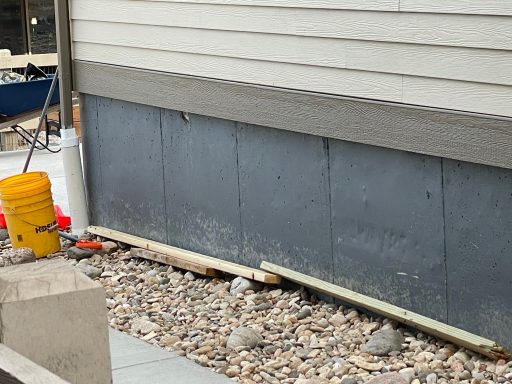Systems for Dampproofing & Waterproofing Foundation Walls
The terms “dampproofing” and “waterproofing” are commonly used interchangeably in the design and construction industry, but the facts are that these two systems are not the same; they are used for different purposes and have different requirements, and careful designers and builders should understand the differences between the two systems along with the rules relating to how they are to be specified for any given project. So, let’s dig into the code and see what it says.
Code Requirements

Chapter 18 (from the 2018 IBC) is titled, “Soils and Foundations,” section 1805 is titled, “Dampproofing and Waterproofing,” and section 1805.1 establishes the first rule for where these protections are required. The code requires that all “walls or portions thereof that retain earth and enclose interior spaces and floors below grade shall be waterproofed and dampproofed,” establishing the general rule that wherever foundation walls retain earth or interior space below grade, such foundations require either dampproofing or waterproofing protection. This includes basement walls, cellar walls, crawlspace walls, and any other below grade walls meeting the code-established criteria. But, how does one determine if any given wall is required to be dampproofed, or waterproofed?
Section 1803.5.4 of the code requires a subsurface soil investigation (usually issued in the form of a geotechnical report) to be provided to determine at what depth the ground water table exists. This is to determine whether or not the foundation walls in question are going to experience hydrostatic pressure conditions or not. A high groundwater table can result in water being held against the foundation, pressing against the concrete, where a low groundwater table may not pose a similar problem since it is presumed that any stormwater or irrigation water will continue to percolate and absorb through the soils. Once the groundwater level is established through the geotechnical report, the designer can then determine the appropriate treatment for the foundation walls.
When to Dampproof
Per section 1805.2, where a hydrostatic condition is not presumed to occur, the foundation is required to be dampproofed. Dampproofing is not intended to resist substantive water pressure against the foundation (hydrostatic pressure), but resists the passage of moisture and water vapor in the absence of such factors. Dampproofing is intended to protect the foundation from other exterior sources of water such as stormwater, irrigation water, or moisture in the soils, which are not presumed to affect the foundation in the same way that an elevated water table would.
When to Waterproof
Per section 1805.3, where a hydrostatic condition is indicated to occur, the foundation is required to be waterproofed. Waterproofing is a more robust treatment than dampproofing, and is intended to withstand and protect the foundation from sustained hydrostatic pressure. There is an exception in this section which allows dampproofing to be used instead of waterproofing when a ground-water control system is designed and constructed. The ground-water control system as required by code for this exception is essentially a permanent dewatering system which is intended to control and permanently maintain a lower water table. Because this system then eliminates the hydrostatic pressure against the foundation wall, the less robust treatment of dampproofing can be used.
Subsoil Drainage Systems
Finally, don’t forget the subsoil drainage system (commonly referred to as the foundation drain or French drain) required by section 1805.4. If a ground-water control system as described above is utilized, the foundation drain is not required. Even without a ground-water control system, a foundation drain is required as described in section 1805.4. These drains are perforated and wrap the footing around the building to capture water in the ground and transport it to a discharge point, either by gravity or via a sump pit and pump system.
Conclusion
Ultimately, a good rule of thumb regarding dampproofing and waterproofing is that when you have foundation walls that retain earth, if you have a hydrostatic condition, waterproofing is required. If you don’t have a hydrostatic condition, dampproofing is required. And of course, always ensure your design or construction project complies with all applicable building codes, as adopted and amended by your jurisdiction.